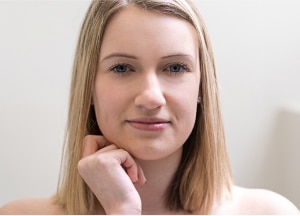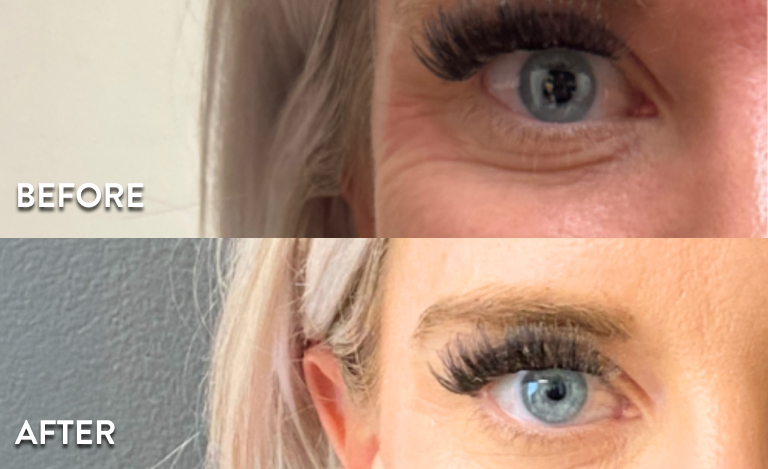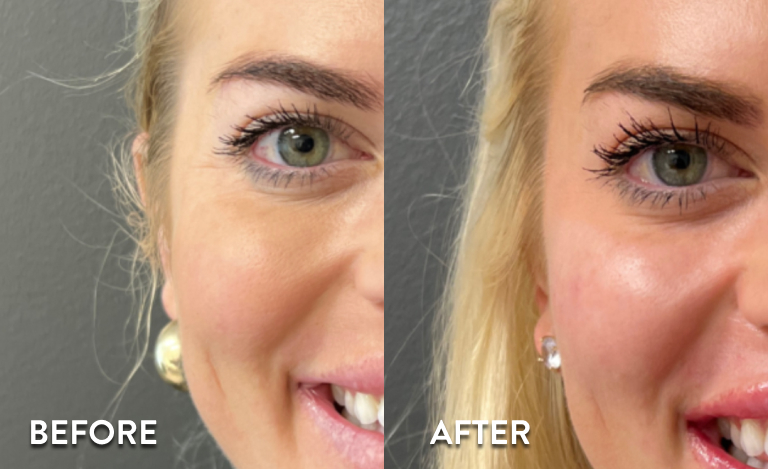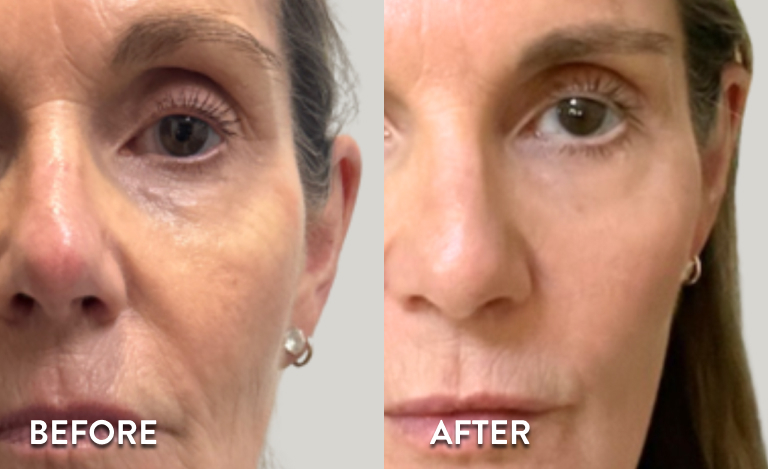Choosing the Right Treatment for Crow’s Feet: Personalized Treatments for Your Skin
Crow’s feet, the fine lines that form at the outer corners of the eyes, are one of the first visible signs of aging. While these wrinkles are common, they don’t have to be permanent. Non-surgical treatments like Botox and Dysport are highly effective for smoothing out crow’s feet and restoring a more youthful, refreshed appearance. These neuromodulators work by temporarily relaxing the muscles responsible for the wrinkles, providing a smoother, rejuvenated look around the eyes.
In this guide, we’ll explain how Botox and Dysport work to reduce crow’s feet, what you can expect during the procedure, and how to determine the best option for achieving smooth, youthful-looking skin around your eyes. We’ll also dive into why Juvederm, Restylane, and Sculptra are not an effective option for treatment.
What Are Crow’s Feet?
Those fine lines that appear at the outer corners of your eyes when you smile or squint are known as crow’s feet. Named for their branching, claw-like shape, these wrinkles are a natural part of facial movement—and over time, they tend to stick around.
As we age, crow’s feet become more visible due to a combination of factors:
- Repeated facial expressions (smiling, laughing, squinting)
- Loss of collagen and elastin, which support skin structure
- Sun exposure, which accelerates skin aging and breakdown
Most people begin to notice crow’s feet in their late 20s to early 30s, and they often become deeper with time.
What Causes Crow’s Feet?
As we age, crow’s feet can become more noticeable, lingering even after you stop smiling or squinting. This happens because our skin gradually loses the building blocks that keep it firm and elastic—primarily collagen and elastin.
Starting in your 20s, your body begins to produce about 1% less collagen each year, which means skin becomes thinner and less resilient over time. This, combined with daily facial expressions and environmental exposure, leads to deeper, more defined lines around the eyes.
But it’s not just age at play—several other factors can accelerate the development of crow’s feet:
- Genetics: If your family members developed fine lines early, you may be genetically predisposed to see them sooner as well.
- Lifestyle: Diet, hydration, stress levels, and whether or not you smoke all influence how quickly your skin shows signs of aging. Your skincare routine—or lack of one—can also make a significant difference.
- Sun exposure: UV damage is one of the biggest culprits behind premature aging. Skipping SPF, sunglasses, or hats exposes delicate eye-area skin to sun damage that speeds up the formation of crow’s feet.
How to Prevent Crow’s Feet and Slow Their Progression
While crow’s feet are a natural part of aging, there are proactive steps you can take to delay their onset and reduce their severity. Preventative care is one of the most effective ways to maintain smooth, youthful skin around the eyes.
- Protecting your skin from the sun: Sun protection is non-negotiable. Wear a broad-spectrum SPF daily, reapply often, and don’t forget your wide-brimmed hat and polarized sunglasses. Polarized lenses reduce glare and squinting, which helps prevent the fine lines that form around the eyes.
- Using targeted skincare products: The delicate skin around the eyes requires specific care. Look for eye creams and serums containing retinol, niacinamide, or hyaluronic acid, which support collagen production and hydration.
- Managing your stress: Chronic stress doesn’t just affect your body—it shows on your face. Repeated emotional expressions (smiling, frowning, squinting) can deepen lines over time. Incorporating stress-reducing activities like yoga or meditation can help relax both your mind and your facial muscles.
- Maintain a healthy lifestyle: Avoid smoking, stay hydrated, and nourish your body with antioxidant-rich foods. These habits support skin health from the inside out and can slow visible signs of aging.
Even with the best prevention strategies, crow’s feet are bound to appear eventually. While they aren’t harmful, they can affect how you feel about your appearance. The good news? There are safe, effective treatments available to soften these lines and restore a smoother, more refreshed look.

How to Get Rid of Crow’s Feet With Injectables
Injectable treatments like Botox, Dysport, and Sculptra can help rejuvenate the face and soften the appearance of crow’s feet—either directly or indirectly. Botox and Dysport are used to relax the muscles that cause these fine lines, while Sculptra works by restoring volume in surrounding areas like the temples, which can create a subtle lifting effect around the eyes.
Let’s explore how each treatment works and who may benefit most from them.
Botox for Crow’s Feet
Botox is a neurotoxin, also known as a neuromodulator, that uses a purified protein called onabotulinumtoxinA to temporarily relax specific facial muscles. When injected into the muscles around the outer corners of the eyes, it limits movement that causes crow’s feet to form and deepen over time.
By reducing this repetitive motion, Botox helps smooth existing lines and prevent new ones from forming, giving the eye area a softer, more youthful appearance.
Botox was FDA-approved for cosmetic use in 2002 and received additional FDA approval in 2013 specifically for treating crow’s feet, following clinical studies proving its safety and effectiveness.
What to Expect During Botox Injections for Crow’s Feet
One of the reasons Botox is so popular for treating crow’s feet is because the treatment is quick, comfortable, requires no anesthetic, and requires little to no downtime. Here’s what your appointment will look like:
- You’ll be offered stress balls or handheld vibrating tools to hold during your treatment—many patients find this helps them to relax.
- Your injector will ask you to smile or squint so the muscles responsible for crow’s feet are clearly visible. Then, Botox is precisely injected into those muscles.
- After the injections, you may notice tiny, raised bumps at the injection sites—these typically disappear within 15 minutes.
- You can return to your normal routine right away. We just ask that you avoid lying down for at least 3 hours post-treatment.

More Info About Botox for Crow’s Feet
Looking for more information about using Botox for crow’s feet? Here’s a table from our experts featuring Botox for crow’s feet injection areas, treatment lengths, costs, and more.
| Category | Botox for Crow’s Feet |
|---|---|
| Injection Area | Orbicularis oculi muscle (surrounding the eyes). |
| Treatment Length | Most appointments take about 15 minutes, with the injections themselves lasting only a few minutes. |
| Sessions Needed | Only one session is needed, but we recommend returning every 3 to 4 months to maintain results. |
| Cost | $10-$15 per unit; typically 5 to 15 units per side is needed. |
| Pre-Treatment Steps | Book a complimentary consultation to determine if Botox is a good fit, discontinue supplements (fish oils, aspirin, ibuprofen) to reduce bruising and bleeding, consult with your physician if taking prescribed anticoagulants. |
| Results Timeline | Results begin to appear within 2–4 days, with full results visible at 2 weeks. |
| How Long Results Last | Results typically last 3 to 4 months. |
| Aftercare | You may experience slight bruising or swelling, which typically resolves quickly. Avoid strenuous exercise, alcohol, and facial treatments for the rest of the day. |
Botox for Crow’s Feet Before and After
Our patients at WIFH love their Botox results for smoothing crow’s feet—see the difference!
Dysport for Crow’s Feet
Dysport is a botulinum toxin injectable that relaxes the muscles responsible for crow’s feet. By temporarily inhibiting muscle movement, Dysport smooths these wrinkles and prevents them from deepening over time.
Dysport is FDA-approved for cosmetic use and is often chosen for its natural-looking results and ability to diffuse slightly more than Botox, making it a great option for broader coverage. Many patients prefer Dysport for treating crow’s feet because it provides a softer, more even distribution of relaxation in the treated area.
What to Expect During Dysport Injections for Crow’s Feet
Dysport injections offer a quick, minimally invasive solution for reducing the appearance of crow’s feet, with most treatments taking just 10 to 15 minutes. Here’s what to expect during the treatment:
- Your provider will begin by assessing your facial anatomy to determine the ideal injection sites. Because Dysport spreads slightly more than Botox, precise placement is key to achieving soft, natural-looking results.
- No anesthesia is required, but we can apply a topical numbing cream if you’re concerned about discomfort. Most patients describe the feeling as a slight pinch or stinging sensation.
- You’ll be asked to smile or squint so the lines around your eyes are visible. Then, using a very fine needle, your injector will administer Dysport into the orbicularis oculi—the small muscles responsible for crow’s feet.
- Immediately after treatment, you may notice small, raised areas at the injection sites—these usually dissipate within 15 to 30 minutes. Mild redness or swelling can occur but typically resolves quickly.
While you can return to your usual routine right away, we recommend the following aftercare for best results:
- Avoid rubbing or massaging the area for 24 hours;
- Skip strenuous exercise, alcohol, and direct sun exposure for the rest of the day;
- Do not lie down for at least 3 hours after treatment.
More Info About Dysport for Crow’s Feet
Using information from our experts, here’s a quick overview of Dysport for crow’s feet—including treatment time, number of sessions, cost, and aftercare guidelines.
| Category | Dysport for Crow’s Feet |
|---|---|
| Injection Area | Injected into the orbicularis oculi muscles, helping relax muscles to smooth wrinkles while maintaining normal facial expressions. |
| Treatment Length | Quick treatment typically takes just 10 to 15 minutes. |
| Sessions Needed | One session delivers noticeable results, with maintenance every 3–4 months to keep skin smooth. |
| Cost | $4 to $6 per unit, with most patients requiring 30 to 60 units for crow’s feet treatment — pricing at WIFH based on customized treatment plans. |
| Pre-Treatment Steps | No special preparation required besides avoiding NSAIDs, alcohol, and blood-thinning supplements to reduce bruising. |
| Results Timeline | Results typically start to show within 2–3 days, with full results visible in up to 2 weeks. |
| How Long Results Last | Results typically last 3 to 4 months, depending on metabolism and lifestyle — some patients find it takes effect faster and may last longer than Botox. |
| Aftercare | Mild redness, swelling, or bruising may occur, but typically resolves within a few hours to a couple days. |
Dysport for Crow’s Feet Before and After
Dysport effectively reduces the appearance of crow’s feet, creating a smoother, more youthful look. Results typically begin to appear within 2 to 3 days, with full effects visible in up to two weeks.
Can I Use Sculptra to Treat Crow’s Feet?
While Sculptra is an excellent option for restoring volume and improving facial structure, it’s not injected directly into crow’s feet at WIFH. The skin around the eyes is very delicate and requires precise, fast-acting treatments—Sculptra works gradually over time and is better suited for deeper areas like the temples and midface.
That said, treating volume loss in the temples with Sculptra can create a subtle lift in the upper face, which may indirectly soften the appearance of crow’s feet. But for directly targeting fine lines around the eyes, Botox or Dysport remain the safest and most effective option.
Can I Use Restylane or Juvederm to Treat Crow’s Feet?
While Restylane and Juvederm are popular hyaluronic acid fillers used to smooth wrinkles and restore lost volume, they are not used for treating crow’s feet. These fillers work by adding volume beneath the skin, making them effective for deeper lines and hollow areas. However, due to the extremely delicate and thin skin around the eyes, we do not inject dermal fillers directly into crow’s feet at WIFH. Doing so can increase the risk of complications such as puffiness, uneven texture, or visible lumps.

That’s why at WIFH, we typically recommend Botox or Dysport for treating crow’s feet. These neuromodulators work by relaxing the small muscles around the eyes, helping to soften fine lines caused by repeated expressions like squinting or smiling.
In some cases, volume loss near the eyes may be contributing to the appearance of crow’s feet. When this happens, we may recommend placing small amounts of filler in areas like the upper cheeks or tear troughs to provide support and a subtle lift. This approach can enhance and complement neuromodulator treatments.
However, when crow’s feet become deeper and more etched into the skin, Botox and Dysport alone may not provide the desired result. In these cases, we may recommend laser treatments like CoolPeel or fractional CO2 resurfacing, which help smooth deeper lines and stimulate collagen production for more comprehensive rejuvenation.
Discuss Crow’s Feet Treatment Options with Our Experienced Team
If you’re looking to smooth the appearance of crow’s feet, the expert team at WIFH is here to guide you. During your complimentary consultation, we’ll take the time to understand your goals, budget, and timeline—and recommend the most effective treatment plan for your skin.
Whether it’s Botox, Dysport, or a combination approach, our team has the experience and precision to deliver safe, natural-looking results. Schedule your complimentary consultation today and let’s create a personalized plan that works for you.

















